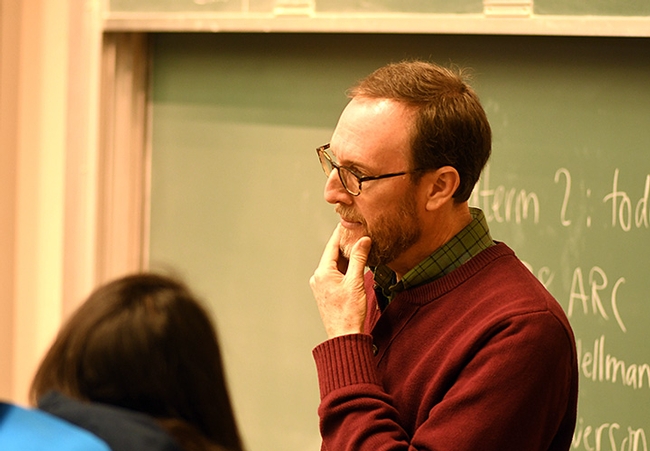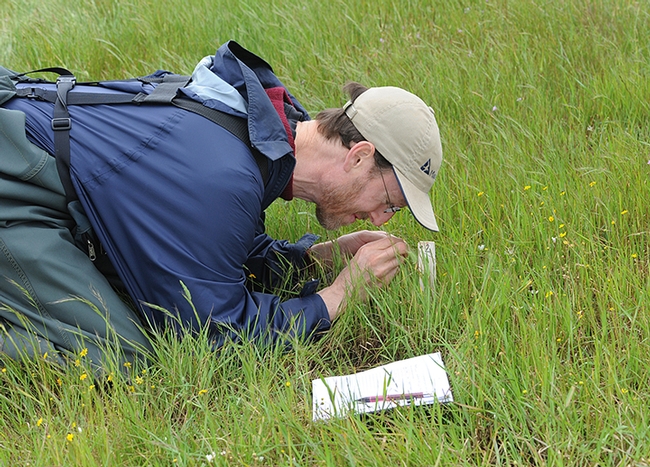- Author: Kathy Keatley Garvey
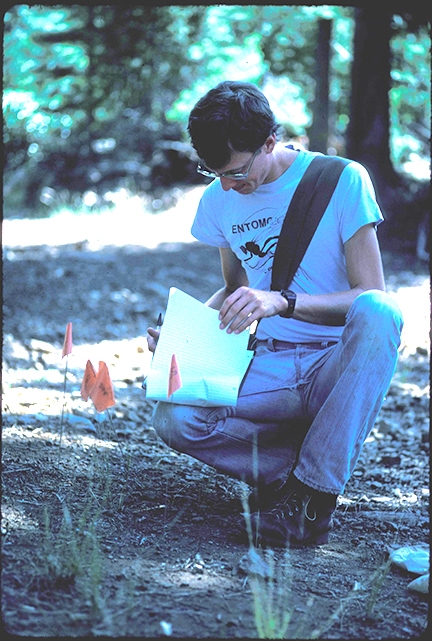
Jay Rosenheim was a third-year physics major at the University of California, Davis, in 1981 when—“on a lark”--he enrolled in Professor Harry Kaya's Entomology 100 course.
The professor inspired him, the class enthralled him, and insects captivated him.
In mid-term, Jay changed his major to entomology, and went on to earn two degrees in entomology (bachelor's degree from UC Davis in 1983, and doctorate from UC Berkeley in 1987); join the UC Davis faculty in 1990; and become a UC Davis distinguished professor in 2018.
The former UC Davis physics major is now a newly inducted Fellow of the 7000-member Entomological Society of America (ESA), a global honor accorded to only 10 persons annually.
Marshall Johnson, a 2006 ESA Fellow and an emeritus Cooperative Extension specialist and researcher at UC Riverside, nominated Rosenheim for the award. “Jay was my postdoc at the University of Hawaii,” Johnson said. “He did a great job and I have kept my eye on his career ever since.
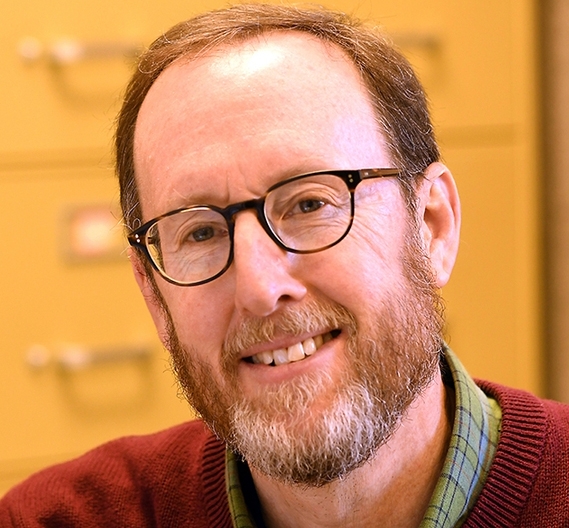
ESA singled out Rosenheim at its virtual meeting for his contributions on the ecology of insect parasitoids and predators, insect reproductive behavior, and the application of big data, or "ecoinformatics," methods in agricultural entomology.
And it all began four decades ago in a UC Davis classroom. This is what occurred.
“About a month or so before the course was to be taught, I received a call from this physics student, Jay Rosenheim, who wanted to take Entomology 100,” recalled Kaya, now an emeritus professor and himself an ESA Fellow (2007) for his international contributions to insect pathology and nematology. “I asked a few questions on why he wanted to take the course. He said he always loved insects but he said he did not have the prerequisites for the class--no college biology-- but he was keenly interested in insects and really wanted to take the class.”

Kaya was actually teaching the class for Professor Robbin Thorp (1933-2019), a bee specialist on sabbatical. “At the time, I had a 25 percent teaching appointment in entomology and a 75 percent research appointment in nematology,” Kaya said. “When Martin Birch, the department chair, asked me to teach the course, I told him that I hoped he could find someone else, but he came back and said I would be the best to teach it.” Birch assigned two of Thorp's graduate students, Evan Sugden and John Skinner, as teaching assistants for the twice-a-week entomology lab.
“Jay also worked briefly in my lab as an undergraduate as well,” Kaya related. “I should add other superlatives as outstanding and world-renowned entomologist. In my view, it did not matter who taught the ENT 100 course. Jay is simply an outstanding individual and has contributed so much on his own merit. Plus, he has a great personality.”

A native of Yorktown, N.Y, young Jay developed an interest in biology while exploring the vernal pools behind his Hudson River Valley home.
His insect interests not only led to his being elected an ESA Fellow but a Fellow of the American Association for the Advancement of Science; recipient of teaching awards from the Associated Students of UC Davis and the UC Davis Academic Senate; and the Distinguished Student Mentoring Award from ESA's Pacific Branch. He has authored more than 160 peer-reviewed publications, and mentored nearly 40 graduate students and postdoctoral researchers, now in the private sector, conservation nonprofits, journalism, or academia.
And it all began when a physics major named Jay Rosenheim asked to enroll in Professor Harry Kaya's entomology class.
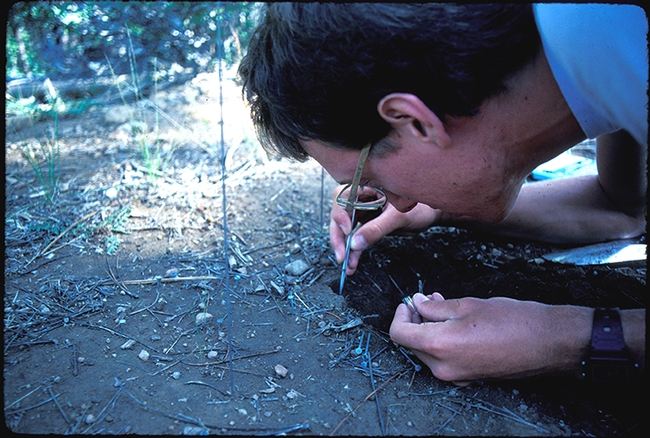
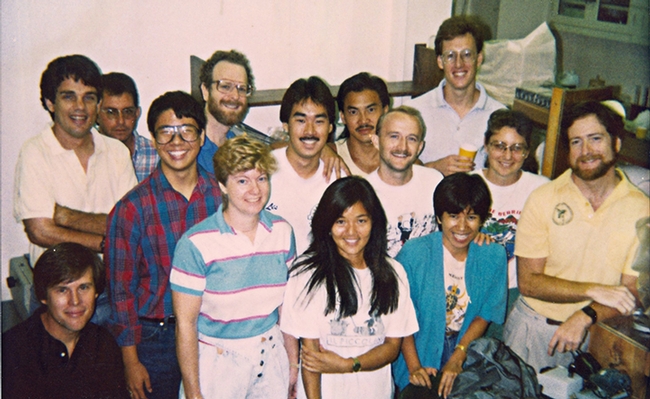
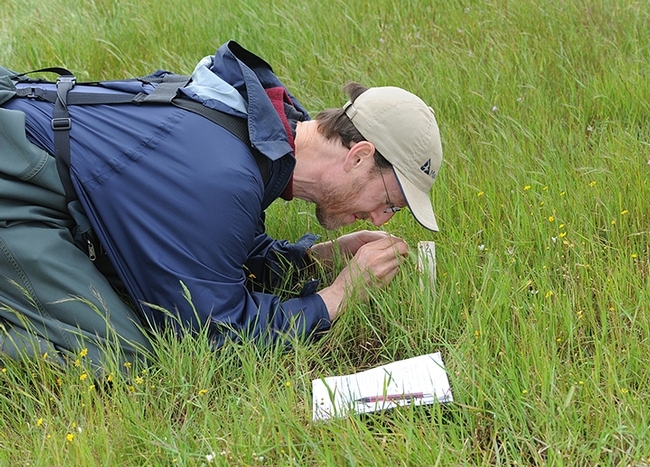
- Author: Kathy Keatley Garvey
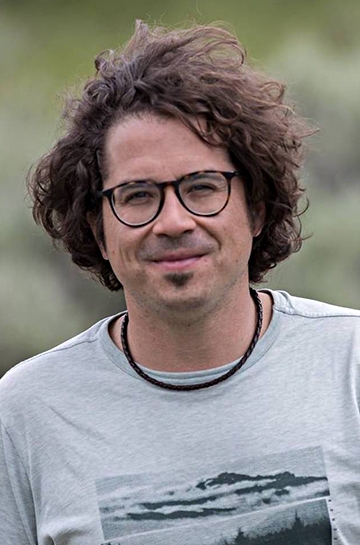
A five-member team led by postdoctoral researcher Daniel “Dani” Paredes of the Daniel Karp lab, UC Davis Department of Wildlife, Fish and Conservation Biology (WFCB), analyzed a 13-year government database to assess how the landscapes surrounding 400 Spanish vineyards influenced European grapevine moth (Lobesia botrana) outbreaks and insecticides application rates.
The article, "Landscape Simplification Increases Vineyard Pest Outbreaks and Insecticide Use," is now online.
“At harvest, we found pest outbreaks increased four-fold in simplified, vineyard-dominated landscapes compared to complex landscapes in which vineyards are surrounded by semi-natural habitats,” said lead author Paredes, who holds a doctorate in environmental sciences (2014) from the University of Granada, Spain. “Overall, our results suggest that simplified landscapes increase vineyard pest outbreaks and escalate insecticide spray frequencies. In contrast, vineyards surrounded by more productive habitats and more shrubland area are less likely to apply insecticides.”
Landscapes around farms are rarely managed to suppress damaging crop pests, partially because researchers rarely measure the key variables that drive farming decisions. This paper, however “shows how using really huge datasets—in this case generated by government employees working with farmers in Spain--can reveal how natural habitats surrounding agriculture can shape pest outbreaks and pesticide use in vineyards,” said co-author Jay Rosenheim, distinguished professor in the UC Davis Department of Entomology and Nematology.
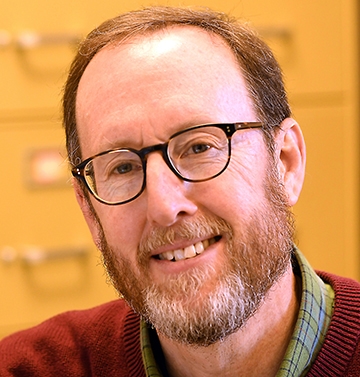
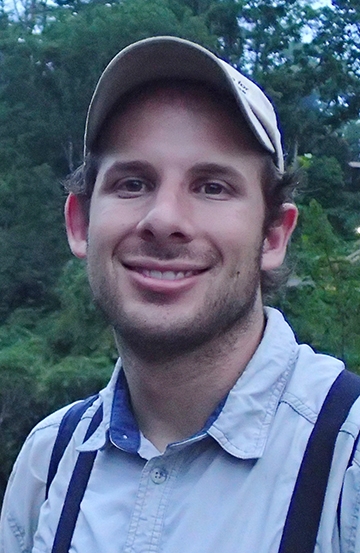
A solution? At an individual level, farmers may better control L. botrana populations through planting native vegetation in and around their farm. Ideally, they would coordinate with each other to maintain and/or restore large patches of productive, shrubland habitats in the surrounding landscape.
Other co-authors are Rebecca Chaplin-Kramer, Natural Capital Project, Stanford University; and Silvia Winter, Institute of Plant Protection, University of Natural Resources and Life Sciences, Vienna, Austria.
Their work was financed by the research project SECBIVIT, or “scenarios for providing multiple ecosystem services and biodiversity in viticultural landscapes,” and a National Science Foundation/USA grant.
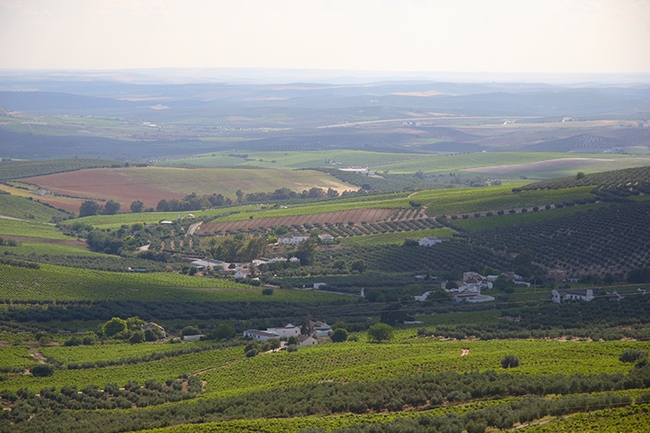
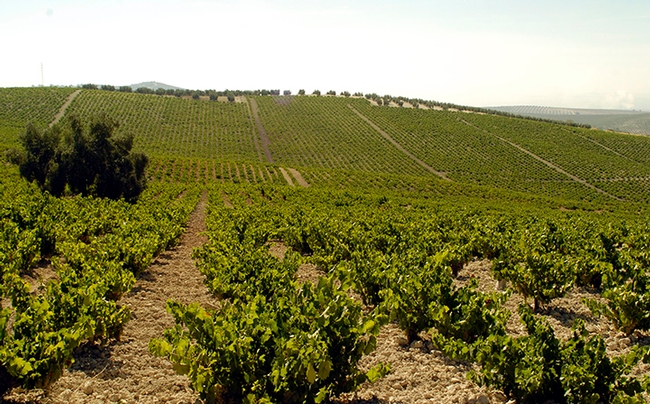
- Author: Kathy Keatley Garvey
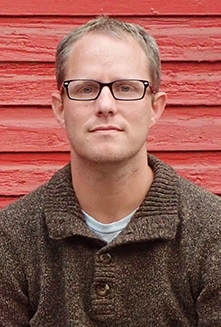
Persimmons, asparagus, figs and other crops distantly related to native California plants attract fewer pests and diseases than the closer kin, and thus receive fewer pesticide treatments, according to a newly published article by two UC Davis-linked scientists in the Proceedings of the Natural Academy of Sciences (PNAS).
Co-authors Ian Pearse, research ecologist with the U.S. Geological Survey and a UC Davis alumnus, and Jay Rosenheim, UC Davis distinguished professor of entomology, analyzed the 2011-2015 state records of pesticide applications of 93 major California crops.
“We hypothesized that California crops that lack close relatives in the native flora will be attacked by fewer herbivores and pathogens and require less pesticide use,” said Rosenheim, a 32-year member of the UC Davis Department of Entomology and Nematology faculty and a newly elected fellow of the Entomological Society of America.
Rosenheim and Pearse examined the pesticide applications against arthropods, pathogens, and weed plants and compiled the data into a comprehensive analysis.
Their findings appear in the PNAS article, “Phylogenetic Escape from Pests Reduces Pesticides on Some Crop Plants,” published Oct. 12. “Phylogenetic relationship” refers to the relative times in the past that species shared common ancestors.
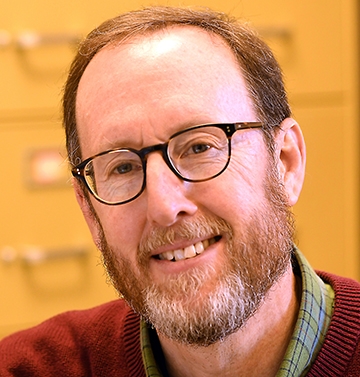
“In contrast, our study focuses on the roughly half of all herbivores and diseases that attack California crops and that are actually native to California. These organisms originally attacked members of the native California flora, but have now shifted to attack a novel host: the crop plant.”
However, “host shifts aren't always easy,” Rosenheim said. “It's relatively easy to shift to attack a close relative of a native host plant, but it's relatively hard to shift to attack a very different host plant.”
Said Pearse: “Our study shows that crops like dates, asparagus, figs, kiwis, or persimmons that are distantly related to native California plants--and thus separated by many million years of independent evolution-- are colonized by fewer pests and diseases.”
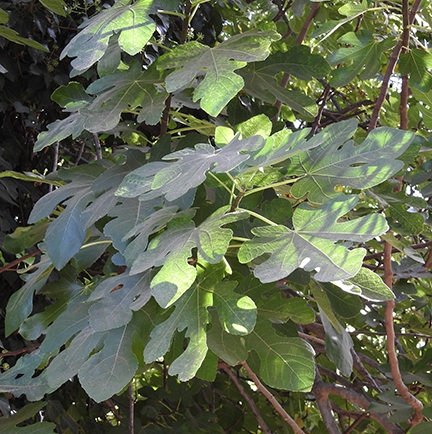
"The crops that require the most pesticide applications, Pearse said, "are those, like artichokes, blackberries, and sweet corn, that have close relatives in the Californian flora and are of high economic value per acre."
California's top agricultural crops include almonds, grapes, lettuce, strawberries, tomatoes and walnuts.
Rosenheim said persimmons are a good example “of the phenomenon we've studied: they have very, very few pests--almost zero in my experience--and that's probably because persimmons have no close relatives in the California native plant community.”
Pearse, a 2005 Fulbright scholar who received his doctorate in ecology from UC Davis in 2011, studying with Professor Rick Karban, joined the U.S. Geological Survey in Fort Collins in 2016. He focuses his research on invasive species and plant-insect interactions. Rosenheim researches insect ecology, with a focus on host-parasitoid, predator-prey, and plant-insect interactions, with direct applications to biological control.
“Pesticides are a ubiquitous (found everywhere) component of conventional crop production but come with considerable economic and ecological costs. We tested the hypothesis that variation in pesticide use among crop species is a function of crop economics and the phylogenetic relationship of a crop to native plants, because unrelated crops accrue fewer herbivores and pathogens. Comparative analyses of a dataset of 93 Californian crops showed that more valuable crops and crops with close relatives in the native plant flora received greater pesticide use, explaining roughly half of the variance in pesticide use among crops against pathogens and herbivores. Phylogenetic escape from arthropod and pathogen pests results in lower pesticides, suggesting that the introduced status of some crops can be leveraged to reduce pesticides.”
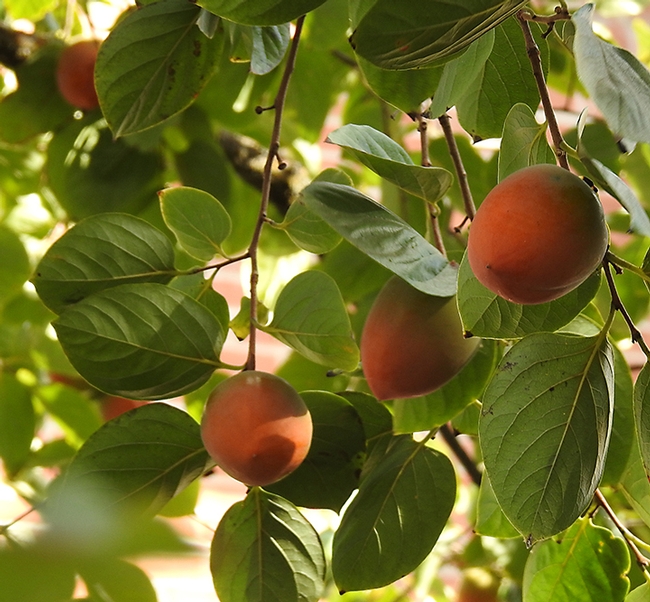
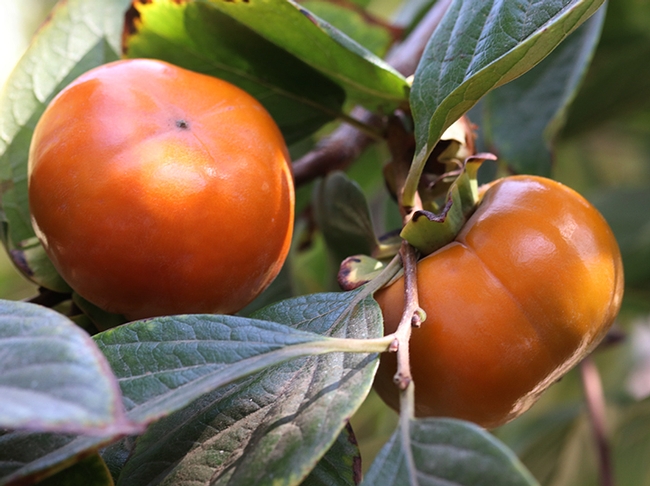
- Author: Kathy Keatley Garvey
Miridae, a company founded and owned by UC Davis-trained ecologist Billy Krimmel, won the highly competitive 2020 Award of Excellence for Communication from the American Society of Landscape Architects (ASLA) for its Seed Bank Living Wall at DPR Construction, Sacramento.
The ASLA awards, judged by a jury of professionals, honor the best in landscape architecture from around the globe. ASLA celebrated the winners at its conference, held Oct. 2-5 in Miami Beach, Fla.
A number of nationally known landscape architecture firms competed for the award “which is some nice icing on the cake!” commented Krimmel, who founded the company in 2015, a year after receiving his doctorate in ecology from UC Davis.
Miridae, led by UC Davis and Stanford graduates, is a diverse and interdisciplinary team of ecologists, landscape architects and builders.
California Native Species
The seed bank, using California native species, challenges the concept of a typical ‘living wall' by highlighting dormant seeds as living plants instead of the leaves and stems normally associated with living plants, Krimmel said.
With a collaborative team of artists and fabricators, Krimmel and his team challenged the look and feel of the traditional “green” living wall and instead proposed a living wall of dormant plant seeds.
Krimmel describes the project as “a celebration of place,” specifically Sacramento's Central Valley. The project is located at DPR's midtown Sacramento location at 1801 J St.
“The dormant seeds in the wall, physically held within the roots of each highlighted plant species, may extend beyond the life of the building,” Miridae writes on its website. “It is a reserve for the future and a concept that challenges how we think about what an individual plant is and how we cohabitate with nature.”
The concept “arms our client, DPR Construction, with a new mission to support native habitat!” Krimmel said. DPR, founded in 1990, is a national technical builder that specializes in highly complex and sustainable projects. Its Sacramento headquarters are at the corner of 18th and J streets. DPR is named for its founders, Doug Woods, Peter Nosler and Ron Davidowski (the D, P and R).
Featured in Magazine and Website
Landscape Architecture Magazine spotlighted the Miridae project in a full-page spread in the print copy, and it is also featured on ASLA's website.
From the ASLA website: “Our project began with a call for a ‘living wall' from a prominent national construction company moving their regional headquarters to Downtown Sacramento. They wanted a living wall that was sustainable, provided a sense of location, and required little maintenance. We wanted to create something that motivated the company to use habitat-crucial native plants in their construction projects and that would highlight the beauty and the benefits of these often-overlooked species. Thus, we decided to pursue a different concept for this living wall, one we have titled, the Seed Bank. Challenging the design standard that highlights the leaves, stems, and flowers we typically associate with plants, the Seed Bank uses dormant, live seeds of important California native species to highlight the unseen elements of these plants and to organize them in a spatially-explicit way that ties the local species to their natural and potential distributions.”
The native plants used in the Seed Wall:
- Arroyo Lupine
- Purple Needlegrass
- California Poppy
- Narrow Leaf Milkweed
- Deergrass
- Common Yarrow
- Vinegarweed
- Hairy Evening Primrose
- Common Fiddleneck
- Bolander's Sunflower
- Turkey Mullein
- Common Madia
- Creeping Wild Rye
- Tomcat Clover
- Blue Wild Rye
Creating Habitat for Native Species
Krimmel founded the company with the intention of “creating habitat for native species within human-occupied areas and engaging people with the species interactions occurring in these habitations.”
The name, Miridae, is Latin for a family of insects known as “plant bugs,” or mirids, which Krimmel researches. One of the most well-known mirid is the lygus bug, a serious pest of cotton, strawberries and alfalfa.
Of his company, Krimmel says: “We create habitat for, and engage people with, native plants and the wildlife they support. We do this by tying together design, science, and high-quality construction to create landscapes that are beautiful, resilient, and ecologically powerful.”
His goal, with each project, is to “come one step closer to creating a network of habitat gardens and migration corridors to support resilient populations of native species.”
At UC Davis, Krimmel studied with Jay Rosenheim, distinguished professor, Department of Entomology and Nematology. Focusing his research on native plant-insect interactions, he wrote his dissertation on “Plant Traits and Plant-Herbivore-Omnivore Interactions.” He holds a bachelor of science degree in human biology (2008), with honors, from Brown University, Providence, RI.
Krimmel continues to be active in the research community, writing peer-reviewed journal articles on native plants and insects, and a quarterly column in the peer-reviewed journal Grasslands. “My vision is to connect landscaping with science and restoration,” he said.
With Miridae, he has overseen the design and building of more than 150 landscape projects throughout the Sacramento and Bay Area regions. He has severed as a board member and chair of outreach and development for the California Native Grasslands Association since 2015.
The UC Davis alumnus regularly presents at the Wildflowers and Conservation Biology to American River College, and the Waterwise Gardening Workshop series by the Yolo Research Conservation District. He also presents at a UC Davis course, Natural RX, discussing nature's healing abilities; and at the Hedgerow Farms Field Day on insect interactions in native gardens.



- Author: Kathy Keatley Garvey
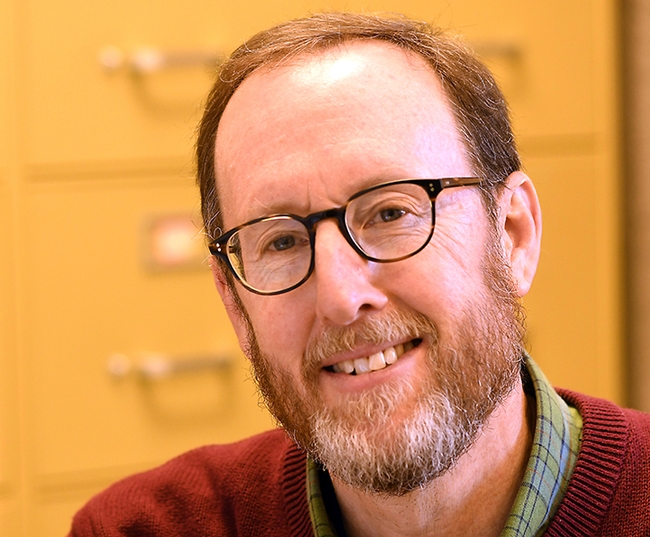
The ESA governing board elected Rosenheim and nine other entomologists as Fellows for their outstanding contributions in research, teaching, extension and outreach, administration or the military. The Fellows' Class of 2020, comprised of five men and five women, will be recognized at ESA's virtual annual meeting, Entomology 2020, Nov. 11-25.
"Jay's substantial contributions to basic and applied entomology are world-renowned, and clearly merit his election as a Fellow of the ESA," said Steve Nadler, professor and chair of the UC Davis Department of Entomology and Nematology.
Rosenheim, who joined the UC Davis entomology faculty in 1990, is internationally known for his research on the ecology of insect parasitoids and predators, insect reproductive behavior, and the application of big data, or "ecoinformatics," methods in agricultural entomology.
“Rosenheim's work has shown that the structure of insect communities is more complex than the archetypal model of three discretetrophic levels, under which predators eat only herbivores and herbivores eat only plants," ESA wrote in a news release. "Instead, widespread predator-predator interactions (intraguild predation), omnivory, and cannibalism create rich and diverse dynamics that can either enhance or disrupt biological control. Rosenheim has also worked to introduce big data techniques to agricultural entomology. By harnessing the decentralized data gathering efforts of farmers, field scouts, and consultants, large data sets can be created and analyzed to reveal important relationships between pests, natural enemies, and crop performance. Rosenheim's research has also examined how organisms evolve to balance multiple factors that can emerge as limits to reproductive success, and how this shapes insect and plant reproductive traits.”
Rosenheim and two other faculty members of the UC Davis Department of Entomology and Nematology--associate professors Louie Yang and Joanna Chiu-- are co-founders and co-directors of the Research Scholars Program in Insect Biology, a mentored research program for undergraduates. Founded in 2011, the program has now trained more than 100 undergraduate researchers.
A native of Yorktown, N.Y, where he developed an interest in biology while exploring the vernal pools behind his Hudson River Valley home, Rosenheim holds a bachelor's degree in entomology from UC Davis (1983) and a doctorate in entomology from UC Berkeley (1987). Rosenheim served as a postdoctoral researcher at the University of Hawaii, and then studied as a Fulbright junior researcher at the Hebrew University of Jerusalem, Israel.
The UC Davis distinguished professor has authored more than 160 peer-reviewed publications. In 2009, he was named a fellow of the American Association for the Advancement of Science.
Highly honored for his teaching and mentoring, Rosenheim received teaching awards from the Associated Students of UC Davis and the UC Davis Academic Senate, and the 2018 Distinguished Student Mentoring Award from the Pacific Branch, ESA. He has mentored 34 graduate students and postdoctoral researchers who are pursuing careers in the private sector, conservation nonprofits, journalism, and academia.
When he was nominated for the Pacific Branch award, his former students praised him for his excellence, kindness and dedication. The awards packet included such comments as “best teacher on campus,” “kind and patient,” and “someone who cares about us and our future.” A former graduate student described Rosenheim as a “successful scientist with a brilliant and inquisitive mind.” Another wrote that he is “one of the most dedicated and effective teachers” he's ever encountered. The ultimate compliment: “Someday I hope to be able to teach and inspire students as well as Jay does.” The Pacific Branch represents 11 states, seven U.S. territories, and parts of Canada and Mexico.
Rosenheim, named a UC Davis distinguished professor in 2018, joined ESA in 1983. He serves on the editorial board of the journals Biological Control and Entomologia Experimentalis et Applicata, and as a subject-matter editor of Ecology and Ecological Monographs.
Locally, he serves as the volunteer faculty representative for the Jepson Prairie Preserve, a Dixon-area site renowned for its vernal pools. The preserve is owned by the Solano Land Trust, which manages the site with UC Davis, the Nature Conservancy and Jepson Prairie Docents.
Rosenheim and his wife, Shulamit Glazerman, are the parents of four children: Hillel, 20, a student at the State University of New York (SUNY) Binghamton; Leah, 18, soon to begin her studies at SUNY Binghamton; and Eitan, 16, and Meirav, 14 of the family home in Davis.
Other newly elected ESA Fellows are
- Carol Anelli, professor, Department of Entomology and the Honors and Scholars Program at Ohio State University
- Carolina Barillas-Mury, head of the Mosquito Immunity and Vector Competence Section, National Institutes of Health, and formerly with Colorado State University
- David Dame, former medical entomologist with the Agricultural Research Service, U. S. Department of Agriculture (USDA) and a former independent consultant
- Richard Hellmich, lead scientist with the USDA–ARS, Corn Insects and Crop Genetics Research Laboratory, and affiliate professor of entomology, Iowa State University
- Philip Koehler, emeritus professor of entomology at the University of Florida
- Catherine Loudon, vice chair and senior lecturer, Ecology and Evolutionary Biology, School of Biological Sciences, UC Irvine
- Corrie Moreau, Martha N. and John C. Moser Professor of Arthropod Biosystematics and Biodiversity at Cornell University in the Departments of Entomology and Ecology and Evolutionary Biology in Ithaca, N.Y.
- James Truman, emeritus professor of biology, University of Washington (UW); former group leader at the Janelia Research Campus of the Howard Hughes Medical Institute in Northern Virginia; and now a UW researcher at the Friday Harbor Laboratories, San Juan Island, Puget Sound.
- Susan Weller, director of the University of Nebraska State Museum and professor of entomology at University of Nebraska–Lincoln
ESA, founded in 1889 and headquartered in Annapolis, Maryland, is the world's largest organization serving the professional and scientific needs of entomologists and people in related disciplines. Its members are affiliated with educational institutions, health agencies, private industry, and government. See list of ESA Fellows.
(ESA contributed to this news story)
